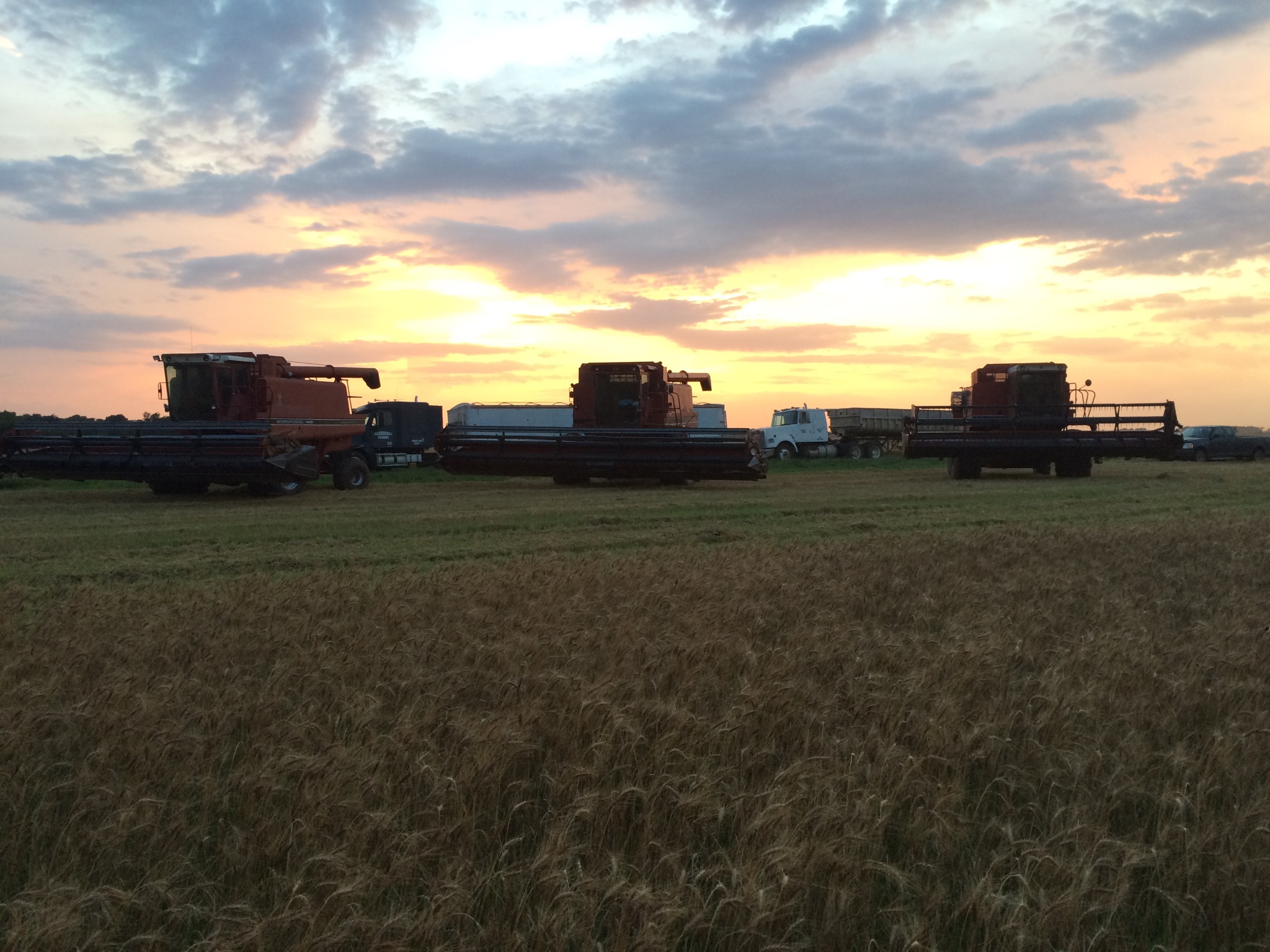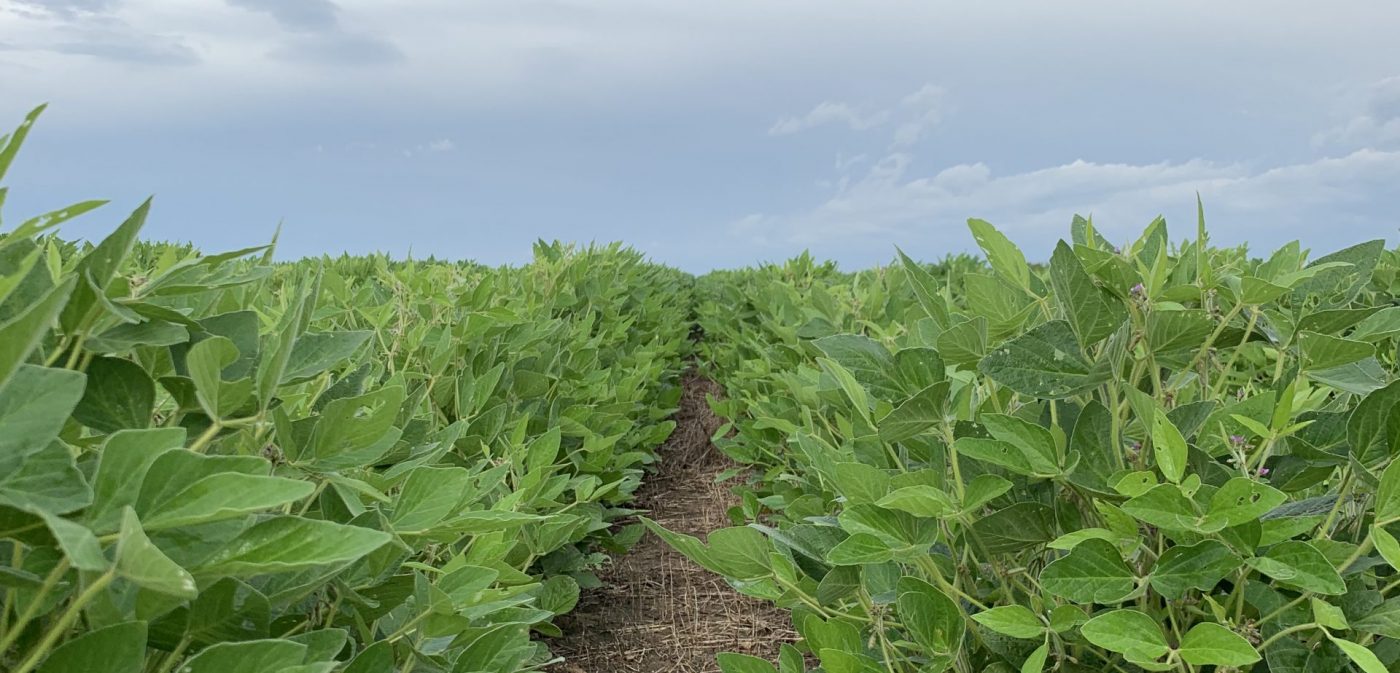
Kansas Crop Production
I am blessed to be from Kansas. I was raised on a family farm, attended a 3A high school (there was 47 students in my graduating class), and as cliché as it is… Wizard of Oz really is one of my favorite movies.
I know other people really love where they grew up. Some kids grew up on the beaches of Florida, went ice fishing in Michigan, or found a passion for hiking in the mountains of Colorado. However, we spent our summers in the combine for wheat harvest, helping with Vacation Bible School, and walking around the county fair with the same best friends we’ve had since preschool. These were the best summers that I’ve had thus far.
Over the summer, we taught a minority group from a small town here in Kansas. It was a blast because between me and a recent doctorate graduate we got to teach about Agriculture. This group was a little different from some of our others because the age range was between 7 and 17. We met up at the North Agronomy Farm here at K-State and walked around the Weeds Garden, the Forage Nursery, and the recently planted Crop Garden. We had small plastic bags with different crop seeds such as wheat, corn, soybeans, flax, sesame, rice, cotton, and canola. You could tell that some of these students had never seen the seed behind their favorite foods or even knew much about how they are wearing cotton t-shirts.
With all this being said, I thought it would be interesting to look up some fun facts about Kansas Agriculture and more specifically crop production.
In 1990, Kansas wheat farmers produced enough wheat to make 33 billion loaves of bread, or enough to provide each person on earth with six loaves.”
As of last year in 2018, Kansas produced 277,400,000 bushels of wheat with an average yield of 38 bushel per acre. One bushel of wheat will yield approximately 42 pounds of white flour or approximately 60 pounds of whole wheat flour. A bit of simple math… and that’s 16,644,000,000 pounds of whole wheat flour produced in Kansas alone. Anyone else amazed?!
One of the sources I found said “One bushel yields enough flour to make 70 one-pound loaves of white bread or 90 one-pound loaves of whole-wheat bread.” I can’t really agree or disagree with this because 1) I’ve never tried to divide up a bushel of wheat to make that much bread and 2) My mom is the baker in our family and I’m confident in saying she hasn’t tried it either.

There is a grain elevator in Hutchinson, Kansas that is half mile long and holds 46 million bushels of grain.
Hutchinson, Kansas is in the South Central region which is where I’m from so I’ve driven past many of their grain elevators. Personally, I’ve worked at two different grain elevators so I have a little place in my heart for the workers that dedicate their time to help the farmers get their crop harvested and stored.
However, just 60 miles away there used to be the Largest Grain Elevator in the world in Wichita, KS. This elevator is better known as DeBruce. The capacity was nearly 21 million bushels, I say “was” because, on June 8, 1998, there was a fire that caused other explosions which in turn caused massive destruction.

In Kansas, farmland covers more than 88 percent of the total land.
On a more upbeat note, Kansas is dedicated to Agriculture! I found a little bit of dated statistics but I can’t imagine much change from then to now.
As of 2004, here is a ranking of Farmland percentages by state. This is so cool! I’m sure we’ve all heard something about agriculture in these states sometime in our lives before now.
| Rank | State | Number | Total acres | Farmland | Avg. acres |
|---|---|---|---|---|---|
| 1. | Nebraska | 48,300 | 45,885,000 | 93% | 950 |
| 2. | South Dakota | 31,600 | 43,797,600 | 90% | 1,386 |
| 3. | Kansas | 64,500 | 47,214,000 | 90% | 732 |
| 4. | North Dakota | 30,300 | 39,390,000 | 89% | 1,300 |
| 5. | Iowa | 89,700 | 31,664,100 | 89% | 353 |
| 6. | Texas | 229,000 | 130,072,000 | 78% | 568 |
| 7. | Illinois | 73,000 | 27,521,000 | 77% | 377 |
| 8. | Oklahoma | 83,500 | 33,734,000 | 77% | 404 |
| 9. | Missouri | 106,000 | 30,104,000 | 68% | 284 |
| 10. | Indiana | 59,300 | 15,002,900 | 65% | 253 |
All the wheat grown in Kansas in a single year, would fit in a train stretching from western Kansas to the Atlantic Ocean.
Now this fact… this just blows my mind.
I found a source talking about the capacity that one boxcar can handle.
A jumbo hopper car can carry about 100 tons of cargo, or 3,500 bushels, which equates to roughly 200,000 pounds. A 125-ton freight car can carry 125 tons, or about 4,450 bushels, which equals about 250,000 pounds. The train is capable of traveling at higher speeds, and a truck must wait at a crossing, while the train always has the right of way.”
Kansas is the leading state in sorghum production.
Most of the facts so far have been about wheat production. However, milo (as we call it in Kansas) is becoming a more popular crop because it has some benefits that are becoming of higher priority and importance such as…
- It is gluten-free and Non-GMO. (Which everyone has their opinions about it is an option if you are sensitive to gluten or have personal conservations about GMOs)
- It’s high in fiber which is good for digestive, hormonal and cardiovascular health. Other grains have an inedible/non-palatable hull around the seed but with milo it just increases the fiber content.
- Sorghum is a good source of antioxidants. Milo is a “rich source of various phytochemicals, including tannins, phenolic acids (help fight pathogenesis associated with diabetic complications and cell mutations), anthocyanins, phytosterols and policosanols (potential cholesterol-lowering food)— which means it may offer similar health benefits as eating whole foods such as fruits.”
- It is slowly digested and balances blood sugar. Because sorghum is high in fiber, protein and starch it slows down the rate at which glucose (sugar) is released into the bloodstream, which is particularly helpful for anyone with blood sugar issues such as diabetes
- Milo helps fight inflammation, cancer and heart disease because it is high in phytochemicals as it is a whole food. Sorghum is high in tannin which have been said to reduce caloric availability and can help fight obesity, weight gain and metabolic complications. This is because tannins lower digestibility.

Sorghum was planted on approximately 6.7 million acres in 2016. A record national yield record was established at 77.9 bushels per acre. The top 5 states in sorghum production are.
1. Kansas
2. Texas
3. Arkansas
4. Oklahoma
5. Nebraska
https://www.movoto.com/guide/ks/kansas-facts/
https://itstillruns.com/comparison-between-trucks-trains-barges-6307489.html
http://stuffaboutstates.com/agriculture/farm_by_percent.htm





-
Tagged crops